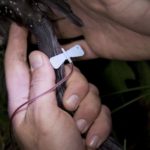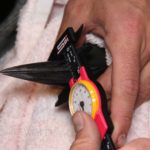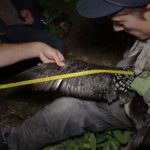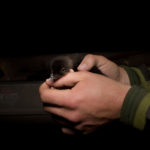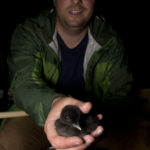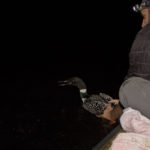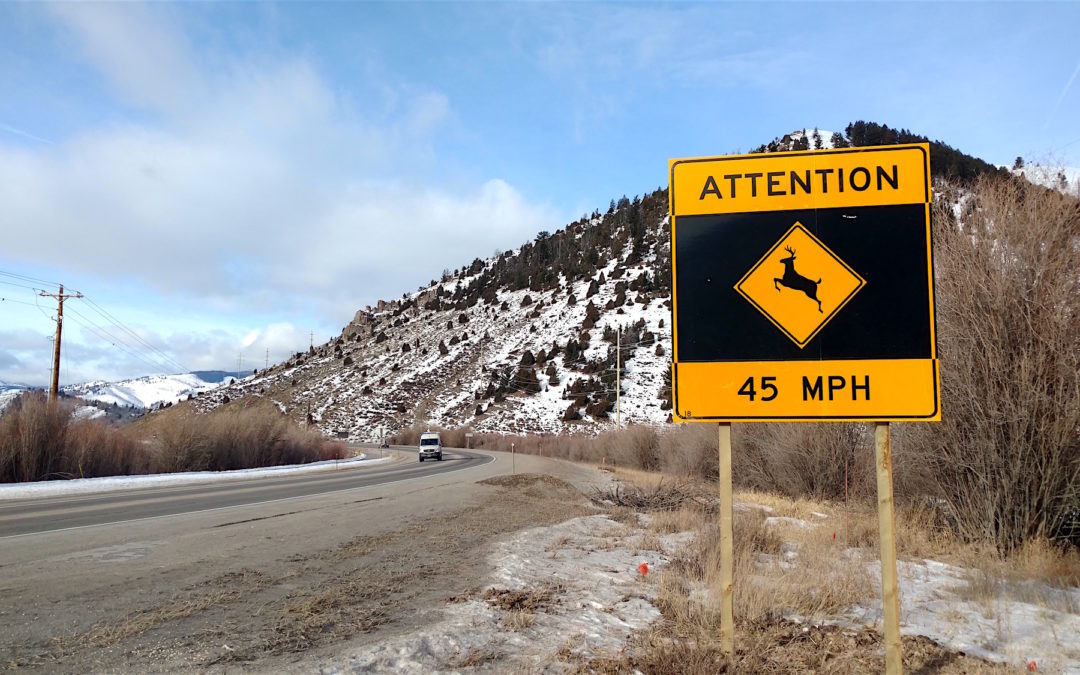
by jhwildlife | Feb 2, 2018 | Blog
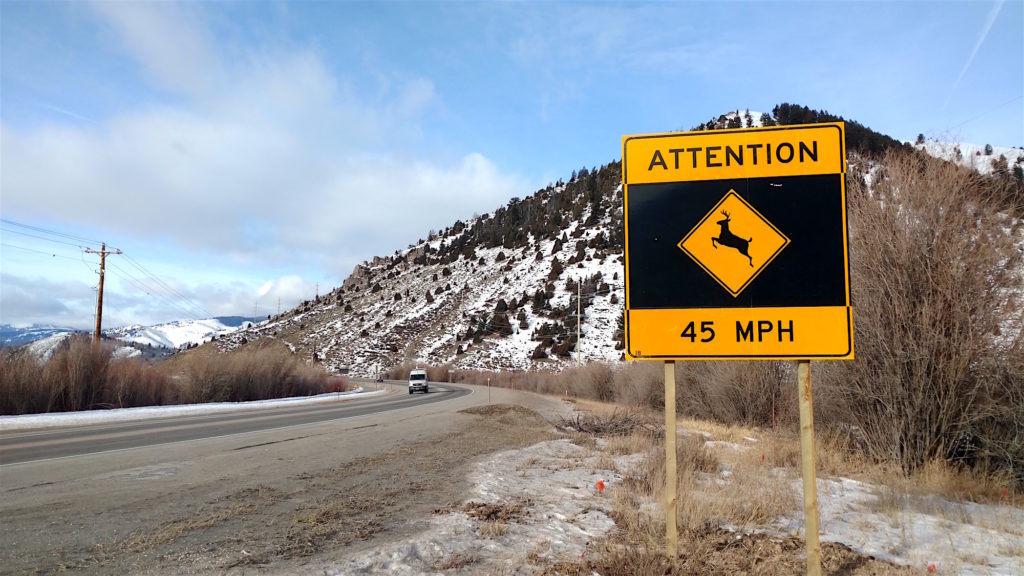
Teton County drivers may have noticed four new wildlife advisory signs on South Highway 89 and two more on WY 22. These visible signs (7 ft. wide by 7.5 feet tall) are designed to heighten awareness within a few of the most intensely utilized wildlife crossing areas in the valley. The signs, which were erected by the Wyoming Department of Transportation as part of a collaborative effort with JHWF, the Town of Jackson and Teton County, encourage caution and slower speeds for the safety of the driver, and for the good of wildlife. They include an advised speed that should be considered at all times, but is especially important to observe from dusk to dawn and during winter when snow accumulations push animals onto or near the highways.
Our wildlife-vehicle collision data suggest that these locations are known “hotspots” for wildlife crossing throughout the year, so it is best always to be alert where you see these signs. In the winter of 2016-2017, the 2.4-mile stretch of South Highway 89 that is now defined by the new wildlife advisory signs was the most dangerous for drivers and wildlife, with several dozen wildlife mortalities recorded. The 1.8-mile stretch of WY 22 now flanked by wildlife advisory signs was also an extreme “hotspot.” Like other yellow highway warning signs, the intended message is to proceed through the zone with caution.
“We were very pleased and honored to work with WYDOT and our local government partners to implement as many new measures as possible in anticipation of winter wildlife movement through the valley,” said JHWF Executive Director Jon Mobeck. “To the great credit of WYDOT and our local government, several actions were taken within a matter of weeks. All involved felt that these measures were the most effective and feasible near-term actions.”
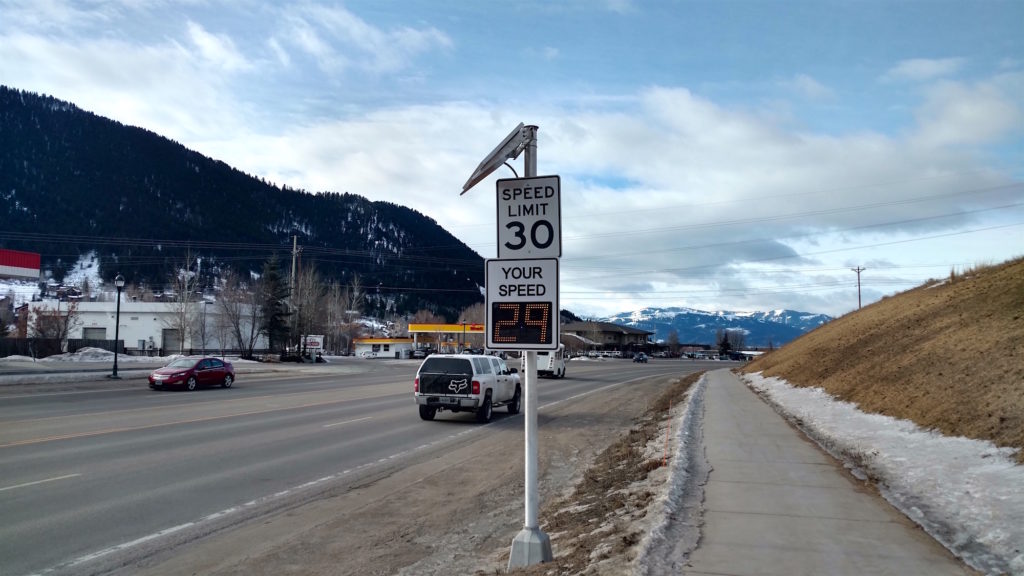
The Town of Jackson voted unanimously to lower the speed limit on Broadway between Budge Drive and Pearl Street to 30 mph. They also agreed to place fixed radar speed alerts along the stretch to advise slower speeds through a heavily-utilized mule deer crossing area.
Each of these measures were enacted as discussions continue about long-term solutions to address wildlife mortalities and driver safety concerns on every highway in the valley. The conversations between these entities extends a valuable partnership that also includes many other organizations and agencies. A Wildlife Crossings Master Plan, to be released by the County this spring, will provide us with a comprehensive view of our array of options in specific locations.
In 2016-2017, we reported 362 known wildlife-vehicle collisions on roadways outside of Grand Teton National Park. As we continue to plan for wildlife crossing structures where they are appropriate within our transportation network, we believe that we must take action today to improve safety for drivers, raise awareness of the most likely collision areas, and educate the public about the known movement areas for wildlife. We are grateful to the Wyoming Department of Transportation, Teton County, the Town of Jackson and many other nonprofit partners for contributing toward this goal.

A new deer crossing sign on Broadway was enhanced with flashing LED lights that alert drivers from dusk to dawn of the high probability of wildlife crossing in the area.
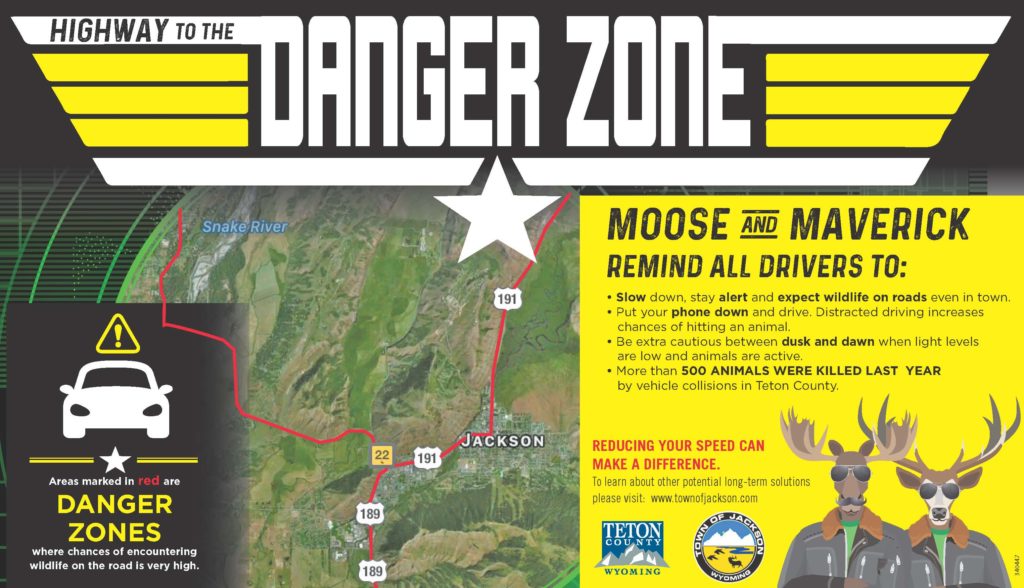
The Town of Jackson, Teton County and WYDOT worked with local nonprofits to design messaging to inform the public about wildlife-vehicle issues.
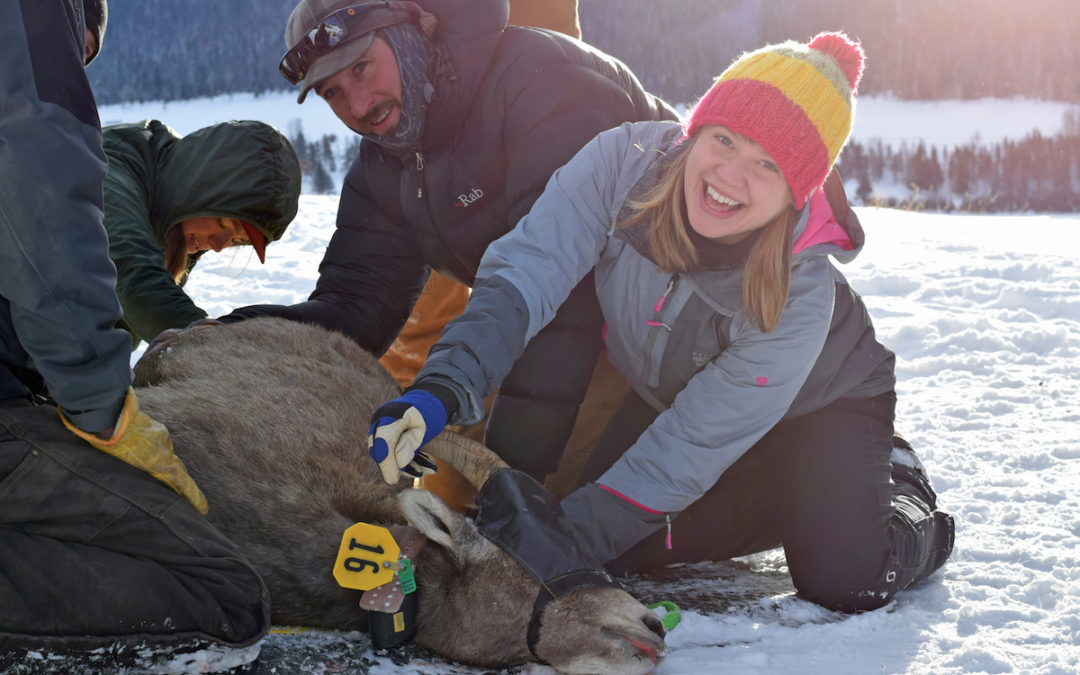
by jhwildlife | Jan 25, 2018 | Blog
By: Aly Courtemanch, Wildlife Biologist, Wyoming Game and Fish Department
You may have noticed some bighorn sheep wearing radio collars or perhaps a helicopter flying low in the Gros Ventre and Curtis Canyon areas earlier this month. For several years, the Wyoming Game and Fish Department (WGFD) has been conducting disease surveillance and monitoring sheep movements and survival in the Jackson Bighorn Sheep Herd. This herd primarily lives in the Gros Ventre Mountain Range. Sheep spend the summer in mountain meadows around Sheep Mountain and deep in the backcountry near the headwaters of Flat Creek, Crystal Creek, Granite Creek, and the Gros Ventre River. Most sheep migrate to lower elevation winter ranges around the Grey Hills, Red Hills, and Lower Slide Lake in the Gros Ventre drainage, foothills in Curtis Canyon and Flat Creek east of the National Elk Refuge, and Miller Butte. The sheep commonly seen along the highway east of Hoback Junction are also part of this herd.
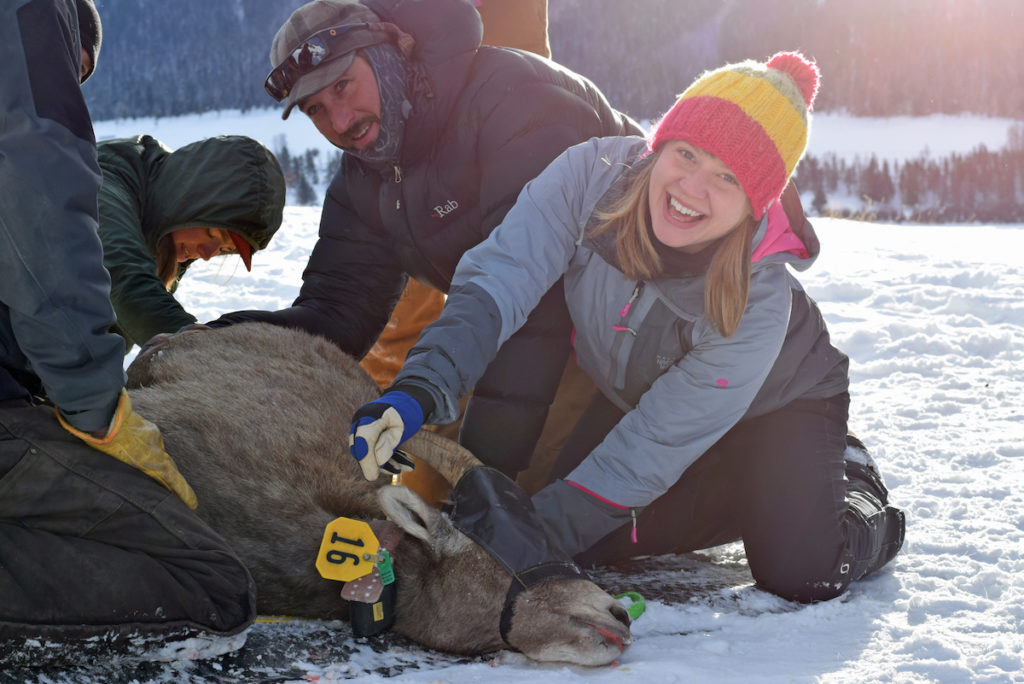
JHWF Associate Director Kate Gersh and Greater Yellowstone Coalition wildlife program coordinator Chris Colligan assist research team. PC: Jon Mobeck
In recent years, the herd has numbered around 400 sheep. However, the herd has undergone two pneumonia die-offs in the past 20 years. In 2001-2002, 50% of the herd died from a pneumonia outbreak. The herd dropped from 500 sheep to approximately 250 sheep. The herd rebounded over the next decade, but underwent another pneumonia outbreak in 2011-2012 when 30% of the herd was lost. Bighorn sheep pneumonia is an extremely complex disease and despite decades of research, its dynamics are still poorly understood. Originally, the disease was transmitted to bighorn sheep populations across the American West in the late 1800s and early 1900s from domestic sheep. Spatial separation of domestic sheep and bighorn sheep is still the primary management strategy to prevent future pneumonia outbreaks. However, we are now learning that contact between domestic sheep and bighorn sheep may not always be needed to instigate a pneumonia outbreak. After a pneumonia outbreak runs its course through a bighorn sheep herd, the sheep that survive are often still infected with the bacterial pathogens. These sheep can harbor these pathogens in their respiratory system for years with no outward symptoms of disease. Then (and this is the unknown part), something will cause these pathogens to suddenly become deadly again and start another die-off throughout the herd. Researchers have tried to link stressors like environmental conditions (such as a severe winter), parasite levels, and density of bighorn sheep (crowding) to pneumonia occurrence, but none have definitively added up. Also, evidence points to multiple bacterial species and within each of those, many strains, potentially playing a role in causing the disease.
Back to the Jackson bighorn sheep herd… Several years of sampling bighorn sheep has shown us that the Jackson Herd currently carries several of the bacterial pathogens that can cause pneumonia. However, the herd has been doing fine since the last outbreak 7 years ago. (This is not unique- most bighorn sheep herds in the Rocky Mountains are infected with some suite of these pathogens.) Over the past three years, the WGFD has partnered with the University of Wyoming to look at this more closely. We are taking a new approach of studying individual bighorn sheep over time and tracking various health metrics: spring and fall body condition (fat levels), pregnancy, lamb survival, parasite levels, blood trace minerals, immune system function, and presence of pneumonia bacterial pathogens. This is the first project of its kind with bighorn sheep, and we are hopeful that it will shed more light on this topic. This is an ongoing project, and you can find more information here: http://wyocoopunit.org/projects/nutritional-dynamics-and-interactions-with-disease-in-bighorn-sheep

Wyoming Game & Fish biologist Aly Courtemanch prepares to withdraw a blood sample. PC: Jon Mobeck
What can you do to help? One early sign that a pneumonia outbreak may be starting in a herd is seeing coughing bighorn sheep. Like humans, bighorn sheep cough periodically for various reasons. However, if you observe one or more bighorn sheep coughing repeatedly (meaning over and over for 30 seconds or more) and severely (meaning they are using their whole body to cough), we would like to know. It is important to record how many sheep you saw coughing, when and where, and their ages and genders if possible (lamb/adult and male/female). Cell phone videos are very helpful too. Also, if you happen to see any dead bighorn sheep, reporting those quickly are very important as well. This will help WGFD be able to monitor when and where a pneumonia outbreak may be starting. For example, several people reported seeing one or two lambs coughing near Miller Butte earlier this winter. As a result, WGFD and National Elk Refuge personnel have been monitoring the sheep on Miller Butte closely to watch for any signs of more sick sheep. Fortunately, we have not observed any more coughing sheep so far. If you observe coughing or dead bighorn sheep, please contact kate@jhwildlife.org or the Wyoming Game and Fish Department at 307-733-2321.
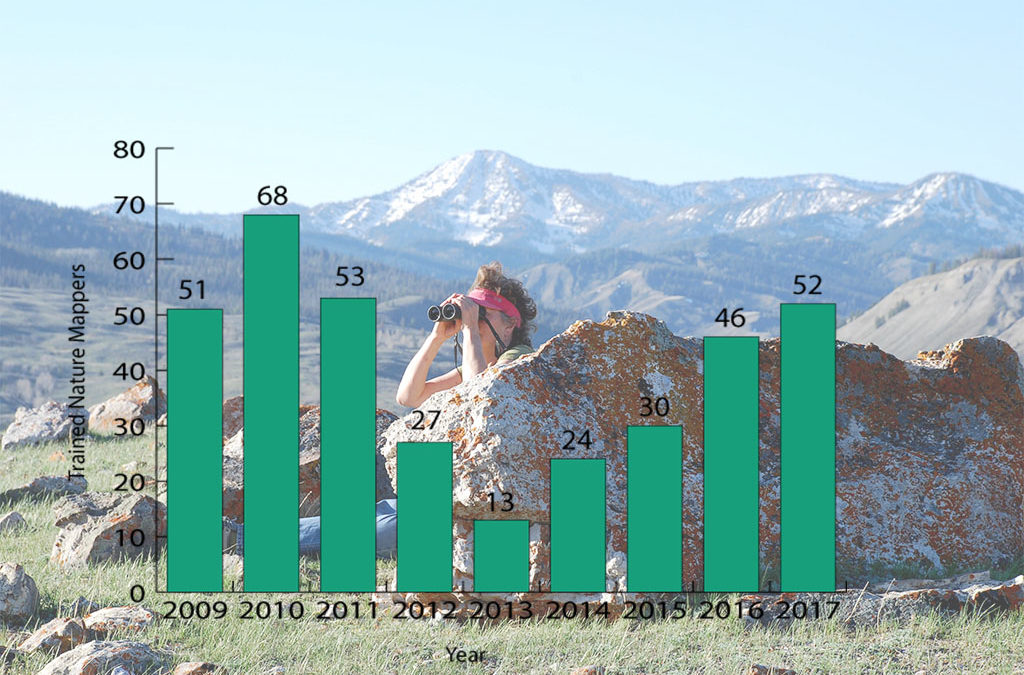
by jhwildlife | Dec 23, 2017 | Blog, Nature Mapping Jackson Hole
Nine Years of Data: What are We Starting to Learn?
Over the past nine years, 464 people have been trained as certified Nature Mappers and have entered 47,829 observations into the Nature Mapping Jackson Hole program’s central database.
All this effort is filling wildlife observation and distribution needs not already covered by state and federal agencies or local research organizations. Furthermore, together we are fostering a community that looks deeper into the meanings of science and citizenship – therefore, realizing that to participate in the building of knowledge about how our world works, can have profound implications for the way we, Jackson Hole, relate to our natural environment and shape its future.
Thank you for getting involved in the experiences of seeing, feeling, and understanding nature in all its amazingness through Nature Mapping Jackson Hole.
Below is a current snapshot of our database (Note: numbers reflect entries made in the database as of December 7, 2017). In the coming year, JHWF will take a deeper look into the database to better understand data related to volunteer participation and to identify potential increases or declines in any species over time. Stay tuned, there is more to come!
2017 Observations by Project:
- Project Backyard – 2,611
- Casual Observations – 3,244
- Moose Day – 166
2017 Observations by Species:
- Reptiles and Amphibians – 71
- Birds – 3,806
- Mammals – 2,126

Figure 1. Total number of active Nature Mappers by year (2009-2017)

Figure 2. Number of newly trained Nature Mappers by year (2009-2017)
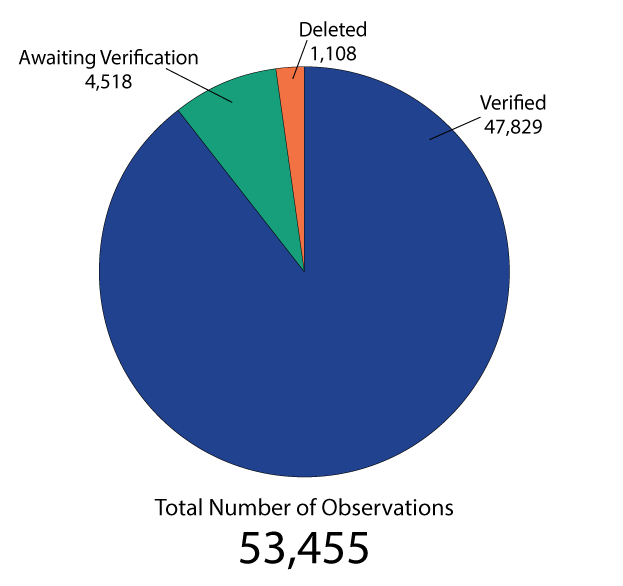
Figure 3. Total number of observations by status in the Nature Mapping Database
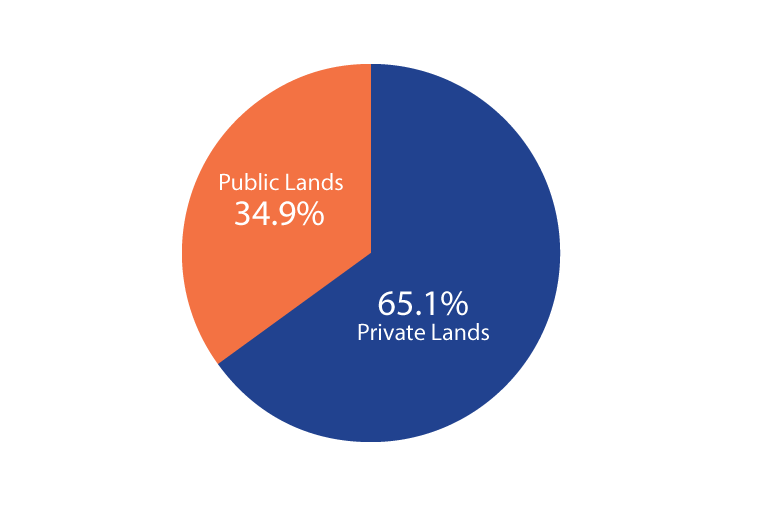
Figure 4. Percentage of Nature Mapping observations that are located on public vs. private lands (verified observations; 2009-2017)

Figure 5. Total number of species entered by Nature Mappers (includes verified, unverified and deleted observations; 2009-2017)
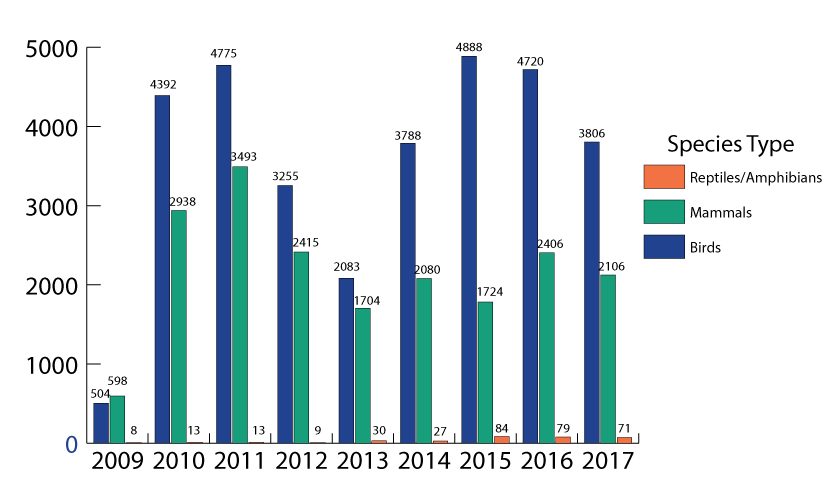
Figure 6. Total number of species by type entered by Nature Mappers (includes verified, unverified and deleted observations; 2009-2017)
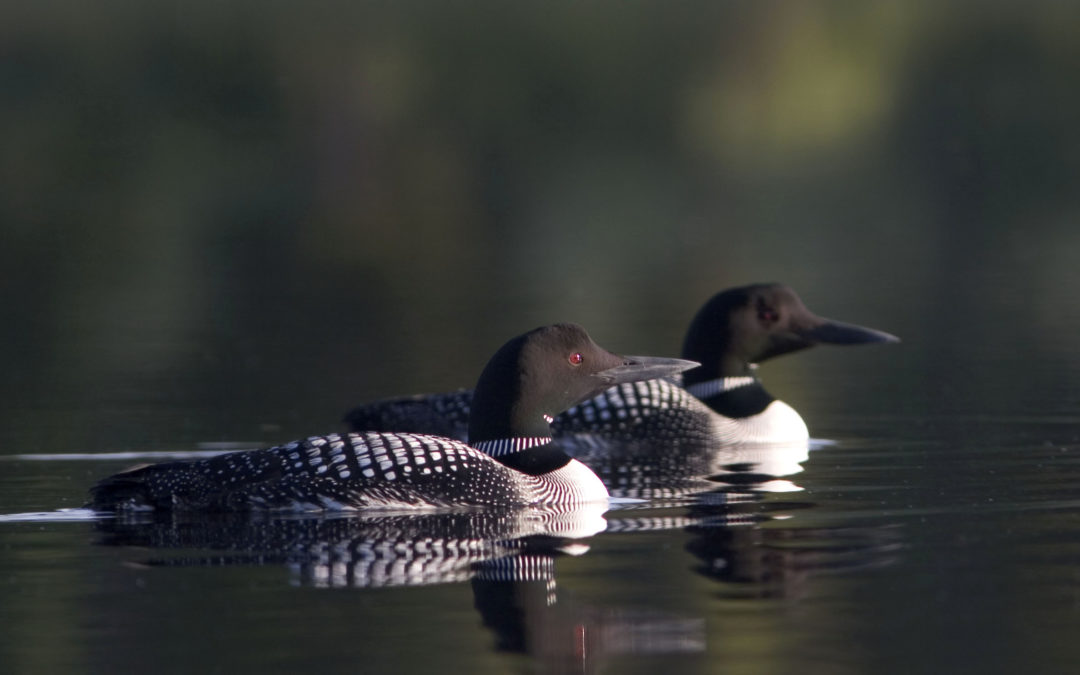
by jhwildlife | Sep 15, 2017 | Blog, Nature Mapping Jackson Hole
by Susan Patla, Non-game biologist for WGFD and NMJH Science Advisory Committee member
The call of a loon echoing across a still mountain lake is a sound that embodies the essence of wilderness. Biodiversity Research Institute (BRI), in partnership with Yellowstone and Grand Teton National Parks and Wyoming Game & Fish Department (WGFD), recently completed a fifth field season to monitor and study common loons in Wyoming. This project has been funded through a generous grant by the Ricketts Conservation Fund to determine the conservation status of loons in Wyoming and four other states. The loon is the rarest nesting bird species in Wyoming and a designated species of conservation concern. The Wyoming population is also the most southern nesting group in North America and isolated from the nearest neighboring population in Montana by over 200 miles. While migrating loons can be seen across the state both in spring and fall, breeding pairs currently occur only in the northwest part of the state.
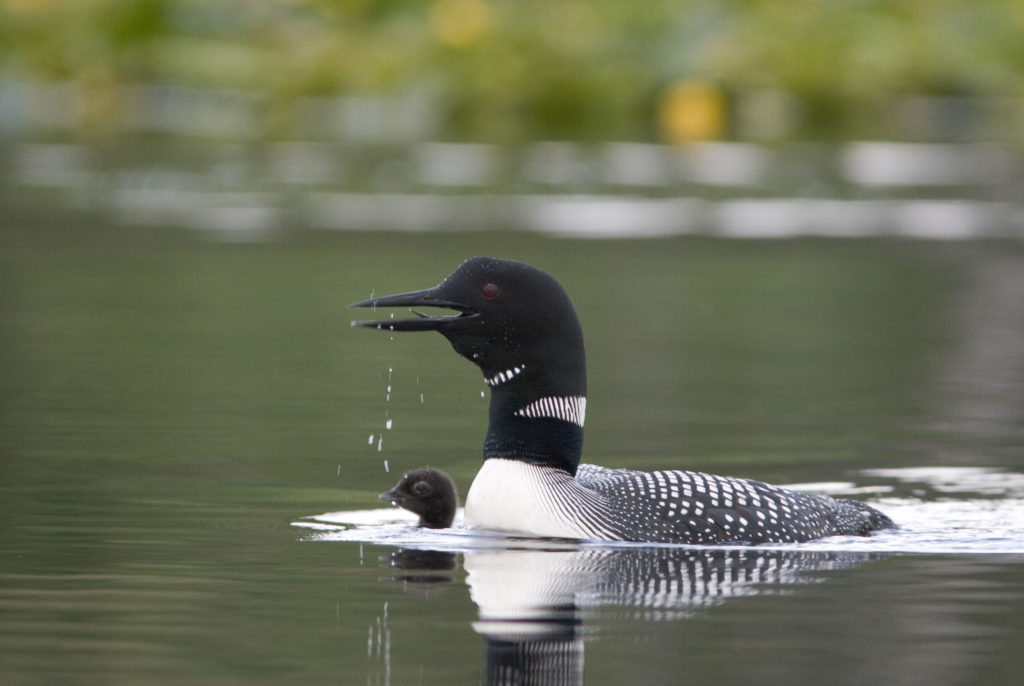
Since 1987, Yellowstone NP and WGFD have been monitoring the presence of loon pairs and fledged chicks. In 2013, BRI expanded on this effort through increased monitoring of pairs during the nesting season and the capture and banding of adult loons. In 2017, there were 21 territorial pairs documented (15 of which were in Yellowstone), and at least 12 of these attempted to nest. Eight pairs successfully hatched a total of ten chicks and all survived to fledging. Seven unpaired adults and one immature loon were also seen. One territorial female adult was captured and banded, and young were banded at two additional sites. Results from blood and feather samples for mercury and genetic analyses will be available later. BRI also deployed nest rafts at four sites and worked with agencies to implement management measures to protect nesting pairs.

Compared to 2016, Wyoming had one fewer territorial pair and productivity was slightly lower than previous years. Nest success was affected this year by the above average snowfall, and late ice-out on many of the nesting lakes which were still frozen in early June. Rapid runoff resulted in flooding at a few sites also. Surveys of many backcountry lakes were also restricted in the early season due to lingering deep snow conditions. Productivity, however, over the study period has been above the 0.48 chicks surviving per territorial pair needed for population stability. Loons have been seen in recent years in the Wind River Range although no nesting pairs have been found. In the future, translocation of chicks may be considered to help expand the nesting population in Wyoming. Major threats to this population include human disturbance of nest sites, drought, and water quality. Mercury contamination, which has been a problem in New England loons, does not appear to be affecting Wyoming loons. All documentation of loons by Nature Mappers is greatly appreciated by BRI and the partner agencies to help in understanding the distribution and movements of this magnificent bird.
Click the image to enlarge and back button to get back to post. Photos by Mark Gocke, WGFD.

by jhwildlife | Aug 18, 2017 | Blog, Wildlife Friendlier Landscapes
by Jon Mobeck, JHWF Executive Director
This is a little story about a deer and a fence in Minneapolis, Minnesota, where I am today.
I was driving down busy Excelsior Boulevard when I saw a doe and fawn gallop across two lanes, then a tree-lined median, then two more lanes and a sidewalk before the doe leapt over a short woven-wire fence that marked the boundary of a golf course. The fawn, however, had no idea how to do what its mother had just done. While at a stoplight, I watched the fawn slam face-first into the short fence, then scamper along the fence line for a hundred yards or so before smashing its nose into the wire again.
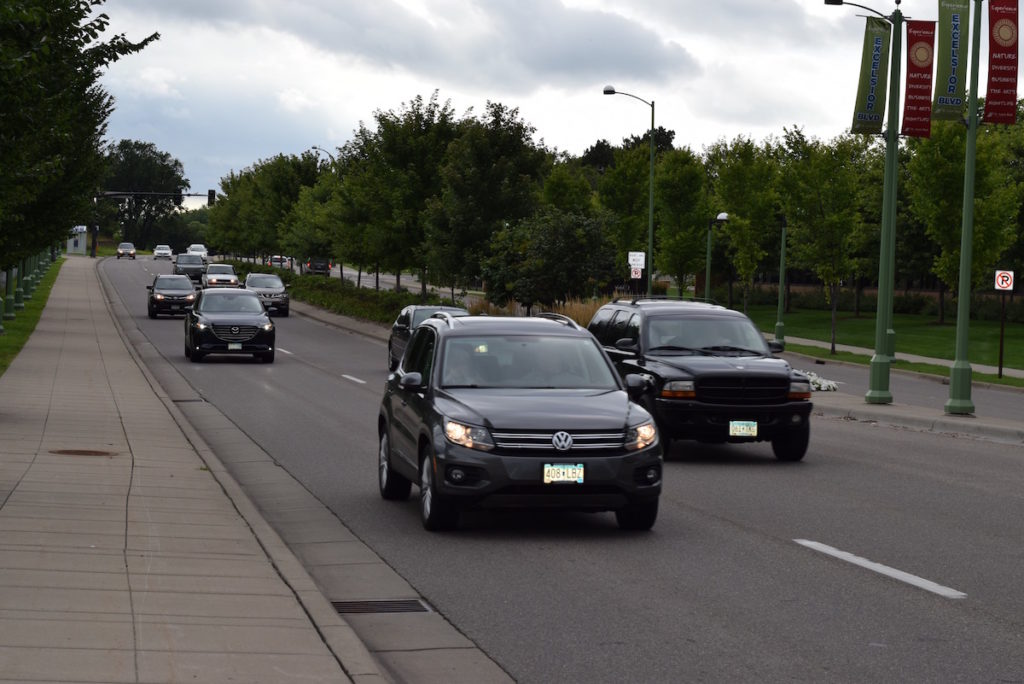
The fence is at far left of this picture of busy Excelsior Boulevard.
When the light turned green, I did a quick u-turn and pulled to the side of the shoulderless road. I activated my hazard lights and jumped out of the car to see if I could capture the fawn and help it over the fence – or at least shepherd it several hundred yards west to a gap in the fence. Neither of these things proved easy to do. The first few times I approached, the fawn blitzed by me racing full speed along the fence line before pausing to make another headlong charge into the woven wire. After many of the failed ramming efforts, the fawn would dart crazily back out into traffic. Although traffic was moving at about 45 mph on that stretch, the fawn fortunately found gaps as it darted about. It never crossed over the median again, always returning for another charge at the fence. Slam! Crash! The doe stood tall on the opposite side of the fence, and mirrored the fawn’s movement east and west along the fence. During all of this time, the fawn rarely ceased bleating, while the doe communicated in brief, huffing pleas.
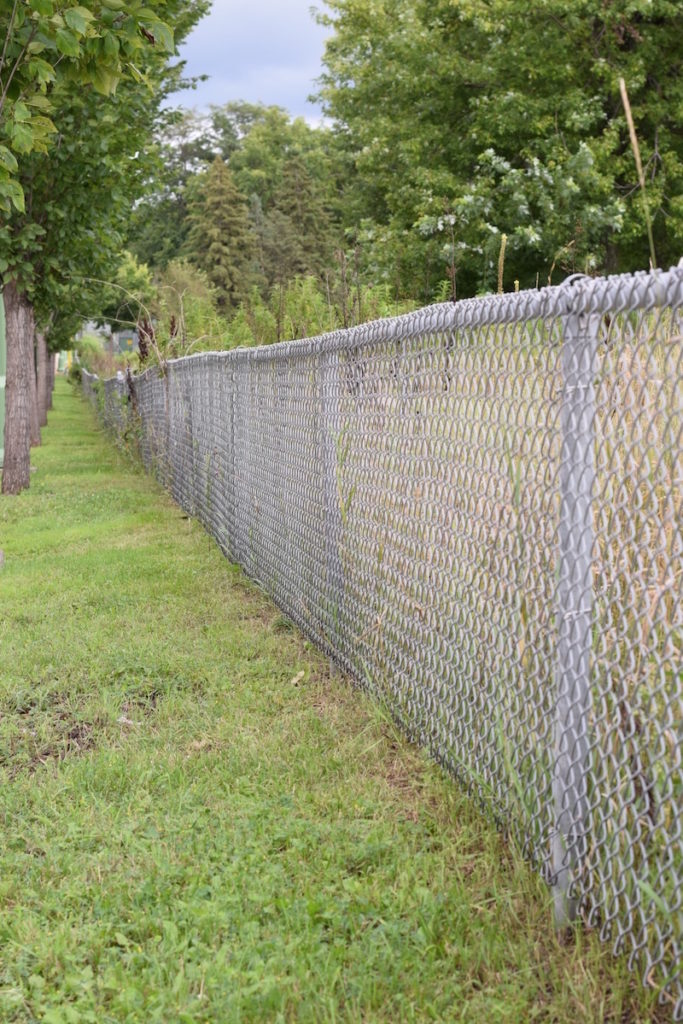
For almost a quarter-mile, the fence was unbroken.
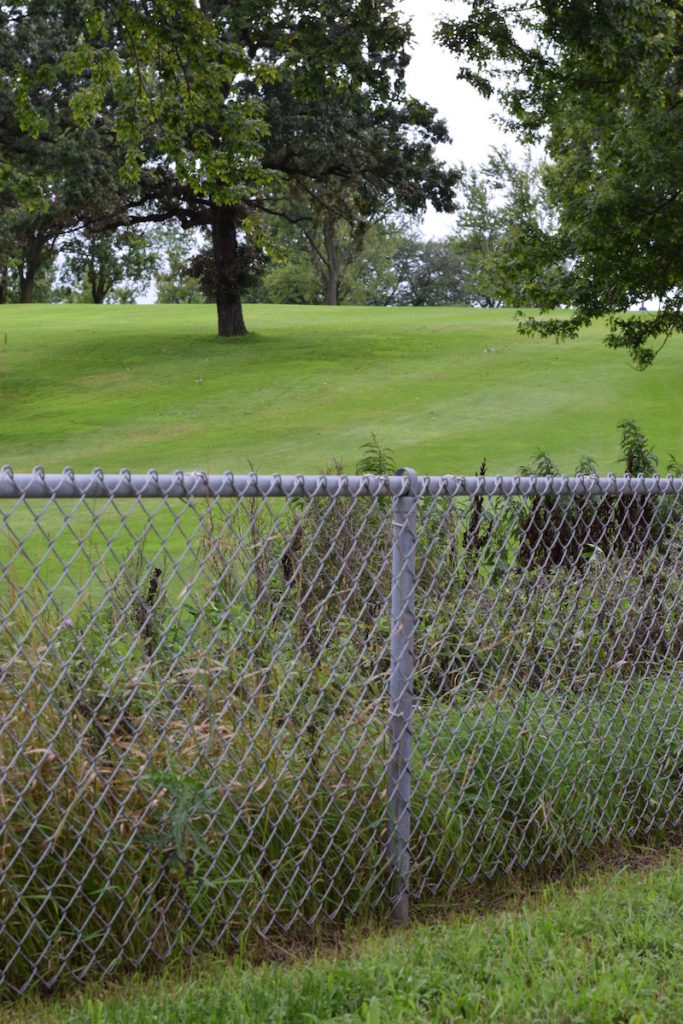
It was about 30 inches high.
As I tried, unsuccessfully, to shepherd or catch this panicked fawn, a young woman came running down the sidewalk toward me. She wanted to help. Without discussing strategies, we assumed the positions of border collies and tried to surround the fawn from opposite sides and “corner” it against the fence, hoping for a chance to catch it. This almost worked, but the fawn squeezed past the woman and darted back onto the road, except now the traffic had stopped, with the two lanes backed up, recognizing what was taking place and thankfully waiting for resolution. After we both watched the fawn race along the fence and slam into it a few more times, thinking it would never slow down, and never stop panicking, the fawn did slow down, and it did seem to stop panicking for a few seconds. It trotted back down the boulevard toward us and as it approached, it walked slowly toward the fence and stopped right between me and the woman. We formed a triangle with the momentarily calm fawn at top near the fence. We slowly stepped toward it and the fawn turned along the fence toward the woman and made a little leap as if to run, jumping (kind of miraculously) right into the woman’s arms, where she easily lifted it over the fence and set it down on the other side. It scampered away in a rush. The doe did not chase after it, but stood very erect, vocalizing. The doe stamped its feet, and took a few measured steps toward the crazed fawn, which was running endlessly, and in circles. After a few moments, the fawn slowed, and then galloped toward its mother.
I don’t know what happened to those deer after that moment, but they were safe for now. The woman and I high-fived each other. She remarked that she was a little worried that she might get kicked. I was impressed by her skill in corralling the bounding fawn in one giant bear hug, her willingness to risk injury, and her desire to help in the first place. Her car was pulled behind mine, also with its hazard lights flashing.
As we were high-fiving, we heard car horns honking in approval. A woman leaned from the driver seat toward the open passenger window to shout “thank you!” A man in a garbage truck yelled “good job!”
Although I sometimes hear people reprimand those who “anthropomorphize” wildlife, it’s impossible to witness an event such as this one and not understand the emotions, the stress, the communication, the concern experienced by a mother and its offspring. They are navigating this planet with us. We are sharing a life that will end with each of us representing a miniscule segment of the unfathomable span of history. No life is more important than any other.
At JHWF, we talk about creating permeable landscapes. We aren’t necessarily focused on how many animals die because of fences, or even how high our fences are – any uninterrupted fence can be a problem. We focus our efforts on how well we are ensuring that the large and small animals can move across a landscape we share with them. Where can and should we create gaps in a fence, for passage above and below? How can animals navigate our development, our neighborhoods, our roadways? A community that lives compatibly with wildlife considers these things daily.
Thanks to hundreds of volunteer heroes, the Wildlife Friendlier Fencing program has removed or modified 188 miles of fence, including nearly five miles this summer. A lot of fawns and calves have had an easier time because of this work. We often think about the height of a fence in relation to how high we know an adult deer or elk can jump. The story of a young whitetail deer in Minneapolis tells us we might benefit by expanding our thinking.
Next Saturday, August 26, we have a project in Game Creek on hillsides frequented by deer and elk. It’s a fence with three barbed wires and a top rail. It’s not hard to imagine a fawn approaching such a fence and trying to ram through it, as was the preference for the fawn in Minneapolis. If the bottom wire is high enough from the ground, the fawn might be able to sneak under, but in a panicked state with developing legs and unrefined navigation skills, it may not make it. So how many fawns and calves get separated from their mothers because of the barriers we raise?
Despite these concerns, what I’m left with after my experience with the deer and the fence in Minneapolis is the potential of people to do good things, to be of service to others, to embrace ethics that connect people with each other and to the wild things that live upon the same land. We have incredible potential, despite the degree to which our more suspicious natures question the goodness of people – a reflection of an increasingly skewed version of reality that focuses on every isolated negative activity within oceans of good deeds done daily, if quietly.
The young woman who stopped to help me inspires me, although I never learned her name. She took a few minutes out of her day to get a deer over a fence. The people who stopped their cars, those who honked, those who cheered and thanked us, they represent the better angels of our nature. We live in a world with beautifully wild things, and we are they.



















